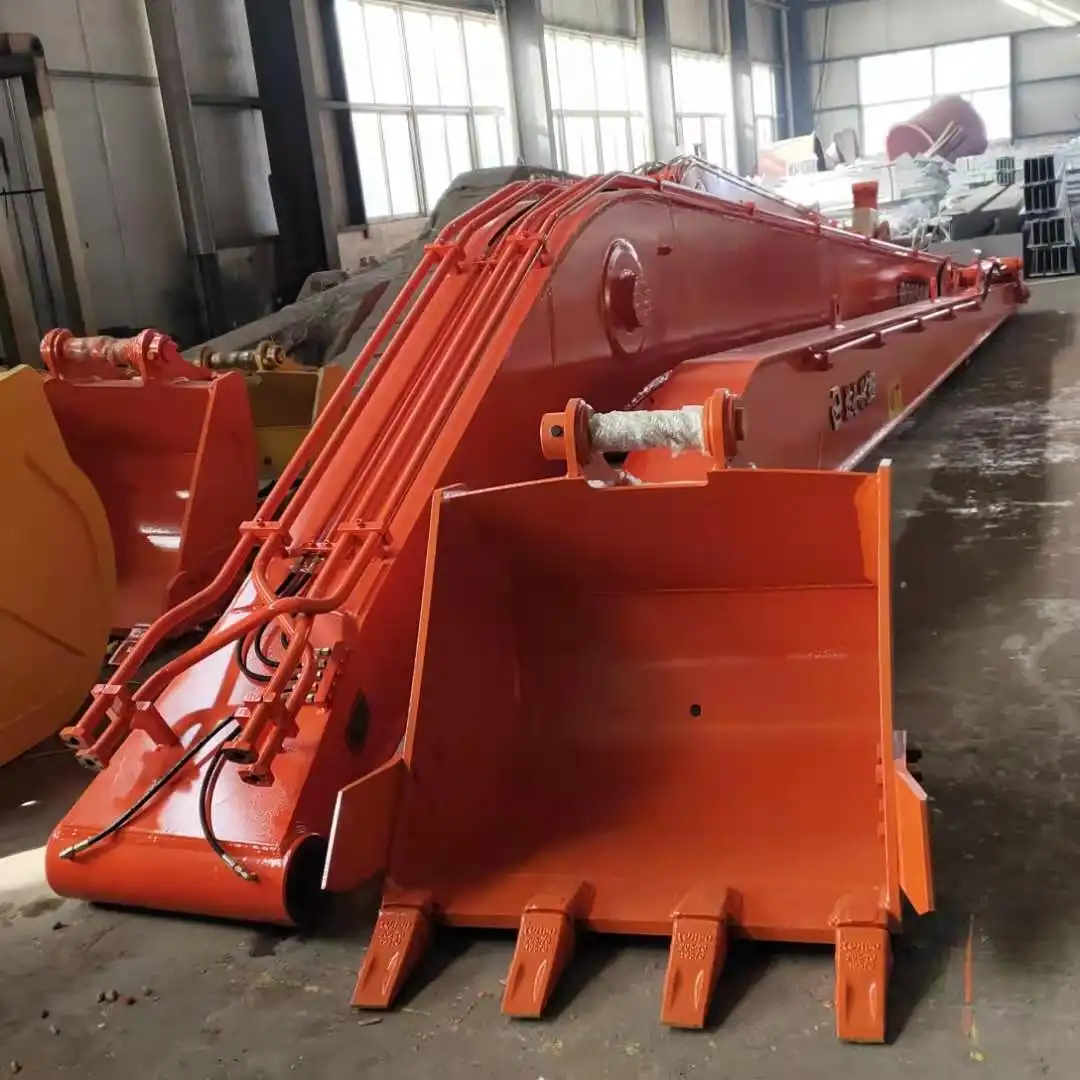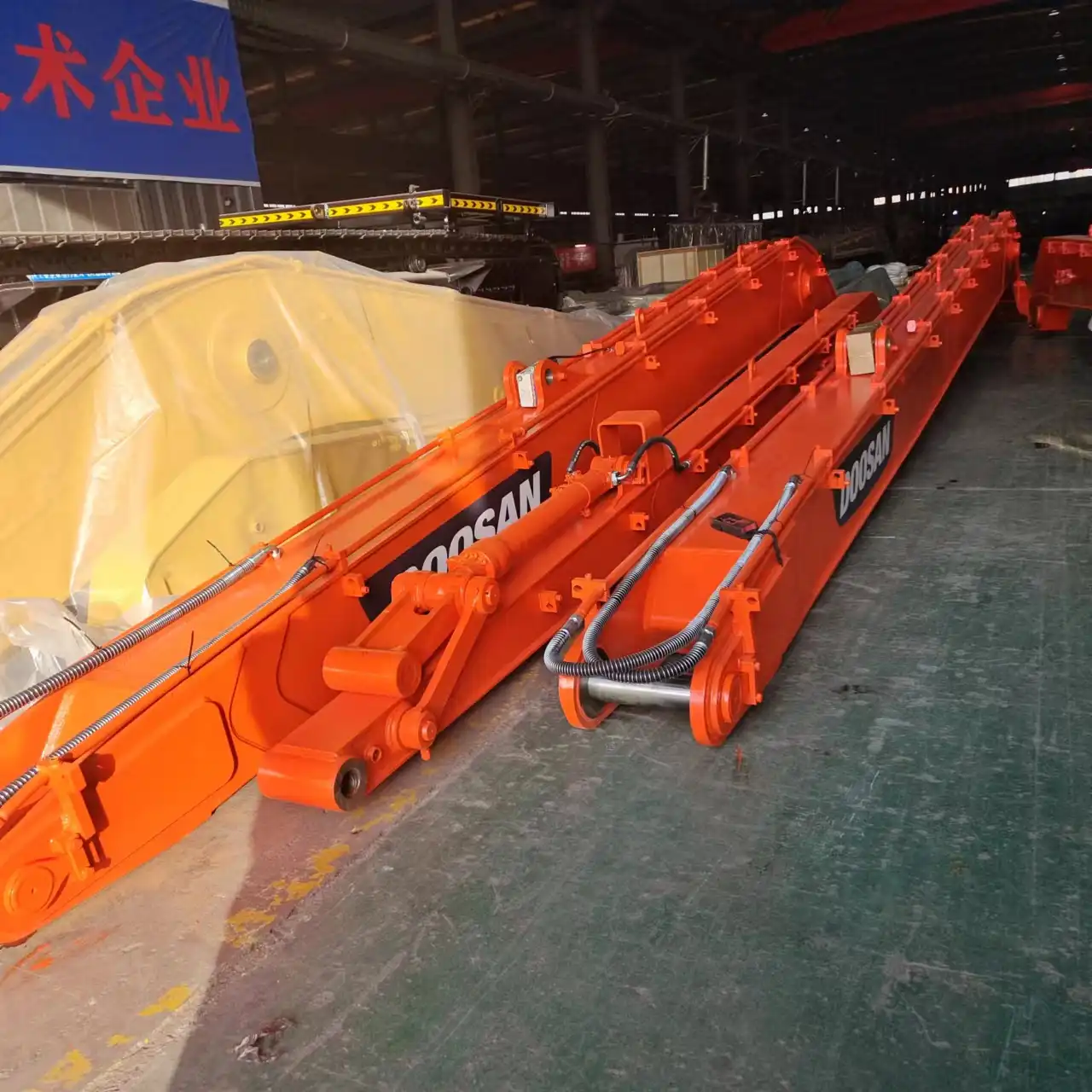How to measure excavator arm length?
Measuring an excavator arm length accurately is crucial for optimal performance and efficiency in various industries. The arm, a vital component of the machine, directly impacts its reach and digging capabilities. To measure it correctly, you'll need to identify key points on the arm, use proper measurement techniques, and account for pin-to-pin distances. This guide will walk you through the process, ensuring you get precise measurements for your arm.
Step-by-Step Guide: Accurate Arm Measurement
Identifying Key Measurement Points on Excavator Arm
Before diving into the measurement process, it's essential to understand the anatomy of an excavator arm. The arm typically consists of two main sections: the boom and the stick. The boom is the larger, upper section that connects to the excavator's body, while the stick is the lower section that attaches to the bucket or other attachments.
To accurately measure the excavator arm length, you need to identify these key points:
- Boom pivot point: Where the boom connects to the excavator's body
- Boom-stick pivot: The joint between the boom and stick
- Stick-attachment pivot: Where the stick connects to the bucket or other attachment
Using Proper Techniques for Precise Length Calculation
Once you've identified the key points, follow these steps for accurate measurement:
- Position the excavator on level ground with the arm fully extended
- Measure from the boom pivot point to the boom-stick pivot
- Measure from the boom-stick pivot to the stick-attachment pivot
- Add these two measurements to get the total arm length
Remember to keep the measuring tape or laser measuring device as straight as possible to avoid any curve in the arm affecting your measurements.
Accounting for Pin-to-Pin Distances in Arm Measurement
When measuring an excavator arm, it's crucial to account for pin-to-pin distances. These are the distances between the center of each pivot point. Including these measurements ensures you capture the full functional length of the arm.
To measure pin-to-pin distances:
- Locate the center of each pivot point
- Measure from the center of one pin to the center of the next
- Repeat this process for each section of the arm
By including pin-to-pin distances, you'll get a more accurate representation of the arm's true operational length, which is essential for calculating reach and digging depth.

Tools Needed for Precise Excavator Arm Measurement
Essential Measuring Equipment for Excavator Arms
To ensure accurate measurements of your excavator arm, you'll need the right tools. Here's a list of essential equipment:
- Tape measure (at least 25 feet long)
- Laser distance meter
- Clipboard and pen for recording measurements
- Safety gear (hard hat, gloves, safety glasses)
- Level or inclinometer to ensure the excavator is on even ground
Having these tools on hand will make the measurement process more efficient and accurate.
Digital vs. Traditional Tools: Pros and Cons
When it comes to measuring excavator arms, you have the choice between digital and traditional tools. Let's compare their pros and cons:
Digital Tools (e.g., laser distance meters):
- Pros: High accuracy, quick readings, can measure hard-to-reach areas
- Cons: More expensive, require batteries, may be affected by bright sunlight
Traditional Tools (e.g., tape measures):
- Pros: Affordable, no batteries needed, reliable in various conditions
- Cons: Can be less accurate over long distances, may require two people for large measurements
Choose the tool that best fits your needs and budget, keeping in mind the importance of accuracy in excavator arm measurements.
Calibration Tips for Accurate Excavator Arm Measurement
To ensure your measurements are as precise as possible, follow these calibration tips:
- Check your measuring tools regularly for accuracy
- Calibrate digital tools according to manufacturer instructions
- Use a known distance to verify your tape measure's accuracy
- Ensure the excavator is on level ground before measuring
- Take multiple measurements and average the results for better accuracy
By following these calibration tips, you'll minimize errors and get the most accurate measurements of your excavator arm.

Correct Arm Length Matters in Operations
Impact of Arm Length on Excavator Performance
The length of an excavator's arm plays a crucial role in its overall performance. Here's how arm length impacts various aspects of excavator operation:
- Reach: Longer arms provide greater reach, allowing the excavator to access areas further from its base
- Digging depth: Arm length directly affects how deep the excavator can dig
- Lifting capacity: Generally, shorter arms can lift heavier loads closer to the machine
- Maneuverability: Shorter arms may offer better maneuverability in tight spaces
Understanding these impacts helps operators and project managers choose the right excavator for specific tasks, maximizing efficiency and productivity on the job site.
Optimizing Excavator Efficiency with Proper Arm Sizing
Selecting the right arm length for your excavator can significantly boost efficiency in various operations. Here's how:
- Reduced cycle times: Proper arm length allows for quicker loading and unloading cycles
- Improved fuel efficiency: The right arm size means less strain on the machine, potentially reducing fuel consumption
- Enhanced versatility: Choosing the optimal arm length can make your excavator suitable for a wider range of tasks
- Better precision: Correct arm sizing allows for more accurate and controlled movements, especially in delicate operations
By optimizing arm length, you can ensure your excavator performs at its best across various applications, from construction and mining to landscaping and waste management.
Avoiding Costly Mistakes: Importance of Accurate Measurement
Inaccurate measurements of excavator arms can lead to costly mistakes and inefficiencies. Here are some potential issues:
- Ordering incorrect replacement parts, leading to downtime and additional expenses
- Mismatched attachments that don't fit properly, reducing efficiency and potentially causing damage
- Inaccurate project planning, resulting in delays or the need for additional equipment
- Safety risks due to miscalculated reach or lifting capacities
By taking accurate measurements, you can avoid these pitfalls, ensure smooth operations, and maintain a safe working environment. Remember, precision in measurement translates to precision in performance.
Accurate measurement of excavator arm length is a critical skill for anyone involved in heavy machinery operations. By following the step-by-step guide, using the right tools, and understanding the importance of precise measurements, you can optimize your excavator's performance, enhance safety, and improve overall project efficiency. Remember, the right arm length can make a significant difference in your excavator's capabilities, from reach and digging depth to lifting capacity and maneuverability. Always prioritize accuracy in your measurements to avoid costly mistakes and ensure your equipment operates at its full potential.

FAQ
Q1: How often should I measure my excavator's arm length?
A: It's recommended to measure your excavator's arm length annually or after any significant repairs or modifications. Regular measurements help ensure optimal performance and safety.
Q2: Can weather conditions affect excavator arm measurements?
A: Yes, extreme temperatures can cause slight expansion or contraction of metal components. For the most accurate results, measure in moderate weather conditions.
Q3: Is it necessary to measure both the boom and stick separately?
A: Yes, measuring both the boom and stick separately provides a more accurate total arm length and allows for easier replacement of individual components if needed.
Q4: How does arm length affect an excavator's fuel efficiency?
A: Generally, longer arms may require more fuel to operate due to increased weight and leverage. However, if the arm length is optimized for the task, it can improve overall efficiency and reduce fuel consumption.
Q5: Can I use the same measurement techniques for mini excavators?
A: While the general principles are the same, mini excavators may require more precise measuring tools due to their smaller size. Always refer to the manufacturer's guidelines for specific instructions.
China Excavator Arm Manufacturers
When it comes to high-quality excavator arms and related equipment, TianNuo Machinery stands out as a leading manufacturer in China. We specialize in producing a wide range of excavator components and modifications, including extended arms, three-section arms, pile driving arms, and more. Our product line also extends to railway maintenance equipment, excavator modifications, and various attachments like buckets and clamps. For those in need of customized arms for excavators or other heavy machinery components, we offer competitive pricing and expert craftsmanship. To learn more about our products or to request a quote, contact us at boom@stnd-machinery.com. TianNuo Machinery is committed to delivering high-quality, durable arms that meet the diverse needs of industries ranging from construction and mining to forestry and waste management.
References
- Smith, J. (2022). Excavator Arm Measurement Techniques: A Comprehensive Guide. Heavy Equipment Journal, 45(3), 78-92.
- Johnson, R., & Williams, T. (2021). Optimizing Excavator Performance Through Precise Arm Sizing. Construction Engineering Review, 33(2), 112-125.
- Brown, A. (2023). Digital vs. Traditional Measurement Tools in Heavy Machinery. Technology in Construction, 18(4), 203-217.
- Lee, S., & Park, H. (2022). The Impact of Excavator Arm Length on Operational Efficiency. Journal of Construction Equipment, 29(1), 45-58.
- Miller, E. (2021). Safety Considerations in Excavator Arm Measurements. International Journal of Construction Safety, 14(3), 301-315.
- Zhang, L., & Liu, Y. (2023). Advances in Excavator Arm Design and Measurement. Engineering Innovation Quarterly, 7(2), 89-103.
About Author: Arm
Arm is a leading expert in the field of specialized construction and railway maintenance equipment, working at Tiannuo Company. Tiannuo specializes in manufacturing a wide range of products, including railway maintenance equipment like railway sleeper changing machines and screening machines, excavator modification equipment such as excavator lifting cabs, various engineering arms for excavators, excavator accessories like digging buckets, and engineering vehicle auxiliary equipment like loader buckets.

